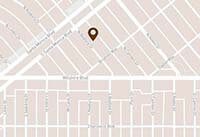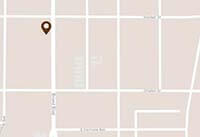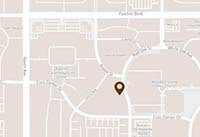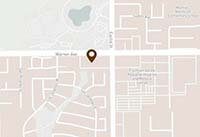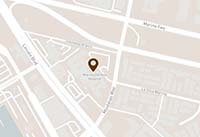Lap Band Procedure
APPROVED BY THE FDA IN JUNE 2001, LAP-BAND ADJUSTABLE GASTRIC BANDING SYSTEM, IS AN ADJUSTABLE SURGICAL TREATMENT FOR MORBID OBESITY IN THE UNITED STATES. IT INDUCES WEIGHT LOSS BY REDUCING THE CAPACITY OF THE STOMACH, WHICH RESTRICTS THE AMOUNT OF FOOD THAT CAN BE CONSUMED.
 Minimally Invasive Approach
Minimally Invasive Approach
Surgeons employ minimally invasive techniques, similar to what you’d use with a wristwatch, in order to fasten an inflatable silicone band around the upper stomach. This creates a small pouch which limits how much food can be consumed, and slows down its emptying process into the rest of your digestive system. Ultimately this helps patients achieve their weight loss goals as they experience fullness quicker while being satisfied with smaller amounts of food.
Least Traumatic
The LAP-BAND Weight Loss Surgery System is a quick, minimally invasive option to help patients achieve their weight loss goals without traditional cutting or stapling. With an average operative time of under 60 minutes, this procedure offers less discomfort and faster recovery than other surgical options. The laparoscopic approach to the surgery also offers the advantages of reduced post-operative pain, shortened hospital stay and quicker recovery. If for any reason the LAP-BAND Weight Loss Surgery System needs to be removed, the stomach generally returns to its original form.
Adjustable Treatment
The LAP-BAND Weight Loss Surgery System is an only adjustable weight loss surgery available in the United States. The diameter of the band is adjustable to meet your individual needs, which can change as you lose weight. Pregnant patients can customize their band to suit the growth of a fetus, whilst those not losing weight as quickly have the option for it to be tightened. By using saline solution which is injected into an inflatable part of the device, its size and circumference are easily adjusted – offering convenience and reliability tailored towards individual needs!
Adjustable Treatment
The LAP-BAND Weight Loss Surgery System is an only adjustable weight loss surgery available in the United States. The diameter of the band is adjustable to meet your individual needs, which can change as you lose weight. For example, pregnant patients can expand (or loosen) their band to accommodate a growing fetus, while patients who aren’t experiencing significant weight loss can have their bands tightened. To modify the size of the band, its inner part is filled with saline solution which allows inflation or deflation, therefore, making the band adjustable to the patient’s weight loss needs.
Once the band is placed, the surgeon can adjust the band by tightening or loosening the inner part of the band which will cause a change in the stoma size (stomach outlet). The adjustment is done by entering the access port with a fine needle through the skin. The adjustments are preformed in the doctor’s office or radiology suite in a matter of minutes and it’s painless. Caution: This device is restricted to use by or on the order of a physician. The BioEnterics LAP-BAND Weight Loss Surgery System and accessories contain no latex or natural rubber materials. The LAP-BAND Weight Loss Surgery System is Patented and Copyrighted by BioEnterics and has been approved by the FDA.
The LAP-BAND® System vs other weight loss procedures – the difference is on the inside
Gastric banding was shown to be safer than sleeve gastrectomy and gastric bypass
Based on recent data from the American College of Surgeons* database and BOLD†
| Laparoscopic Adjustable Gastric Banding (including the LAP-BAND® System) | Sleeve Gastrectomy | Gastric Bypass | |
|---|---|---|---|
| Total Complications At 1 Year12 | 6% | 18% | 24% |
| Reoperation Rate at 30 Days13 | 1% | 3% | 5% |
| Hospital Stay After Procedure13 | Less than 1 day | Approximately 3 days | Approximately 3 days |
| Illness After 30 days13 | 1% | 6% | 6% |
Compared to gastric banding, sleeve patients had the following at 30 days:
3 times greater chance of readmission to the hospital13
3 times greater chance of reoperation13
3 times longer hospital stay following the procedure13
*The American College of Surgeons Bariatric Surgery Center Network (ACS-BSCN) database was developed as part of the ACS-BSCN accreditation program. This analysis of the ACS database includes data from 28,616 patients.
The ASMBS BSCOE program requires accurate and up-to-date information on bariatric surgery practices in order to remain compliant. To this end, the Bariatric Outcomes Longitudinal DatabaseSM (BOLDSM) has been developed that contains data from 57,918 patients worldwide – providing invaluable insights into optimal bariatrics operations as well as helping reinforce compliance with existing regulations.
Warnings: While the LAP-BAND® System provides long-term results, patients may need to undergo explant or replacement surgery in certain situations. This includes pregnancy and serious illnesses that result in increased nutritional needs which require deflation of their bands. However, caution should be taken when taking anti-inflammatory agents such as aspirin as it increases risks for band erosion.
Comparing Surgical procedures – what’s happening inside?
Take a closer look at what’s involved with different procedures
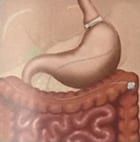 The LAP-BAND® System | 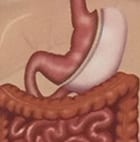 Sleeve Gastrectomy |  Gastric Bypass |
|---|---|---|
| • Performed laparoscopically. A saline-filled band is placed around the top of the stomach, and there is no stomach amputation or cutting of the intestines2,14,15 | • Performed laparoscopically. Up to 80% of the stomach is amputated to create a sleeve1 | • Performed as either an open or laparoscopic procedure. The stomach is cut and the intestines are rerouted to bypass significant digestion14,15 |
| • Can be adjusted over time to fit the needs of the patient2,15 | • Cannot be adjusted16 | • Cannot be adjusted14,15 |
| • Designed for long-term use, but can be removed and reversed if desired14.15 | • A more radical procedure than gastric banding that is permanent and irreversible16 | • Extremely difficult to reverse14.15 |

*Results may vary
Adverse Events: Placement of the LAP-BAND® System carries potential risks which must be acknowledged and taken seriously. While relatively safe, serious surgical complications like death can occur in certain instances; these are heightened based on factors such as medication use during surgery, accompanying surgical procedures, or an individual’s body’s ability to adapt to a foreign implant being present.
Band slippage, erosion, deflation, reflux, obstruction of the stomach, dilation of the esophagus, infection, or nausea and vomiting may occur. Reoperation may be required.
Rapid weight loss may result in complications that may require additional surgery. Deflation of the band may alleviate excessively rapid weight loss or esophageal dilation.
FREQUENTLY aSKED QUESTIONS
Lapband surgery, otherwise referred to as LAGB (Laparoscopic Adjustable Gastric Banding), is a minimally-invasive weight loss procedure. This process uses an adjustable band placed around the upper portion of the patient’s stomach for long term success.
Lapband surgery, or Laparoscopic Adjustable Gastric Banding (LAGB), is an increasingly popular bariatric weight loss procedure. Lapband surgery requires a minimally invasive surgical procedure in which a silicone band is placed around the upper part of the stomach to create a smaller pouch.
No, a lapband cannot damage your stomach. Lapband is a type of adjustable gastric banding (AGB) procedure, which is a minimally-invasive bariatric surgery that helps with weight loss by reducing the size of the stomach.

